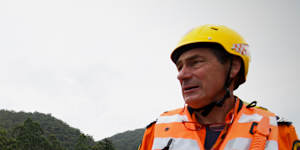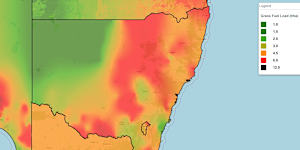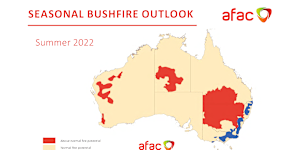Months of wet weather have delayed fire mitigation efforts,with the RFS conducting hazard reduction burns on only 8764 hectares since July. The agency’s target for this financial year is 318,891 hectares. In 2021-22,the agency treated 40,123 hectares,while in 2020-21 about 176,499 hectares were treated.

Despite years of flooding,authorities are growing concerned about grass fire risks.Dean Sewell
The heavy rain has fuelled strong grass growth across much of western NSW. RFS Commissioner Rob Rogers said the state was facing its most significant grass fire threat in more than 20 years,particularly for western parts of NSW.
“I am quite concerned,” he said.
Rogers said while the amount of water in the tableland would elevate grass fire risk for years to come,areas that had burnt during the 2019-20 bushfire season were regenerating faster than expected.
According to the fuel accumulation curve,a model used by fire authorities,the affected landscape should take eight to nine years before it became a concern. But heavy rains over the past three years mean these areas could burn again in five years.
Maps from the NSW RFS show heavy grass fuel loads over huge parts of the state,stretching from western NSW to many coastal areas.

NSW RFS maps show big grass fuel loads in the west.NSW RFS
Climate drivers which have led to years of wet weather – such as La Nina and the negative Indian Ocean Dipole,have already begun to weaken.
Experts are turning their attention to increasing fire risks next year. Above-normal fire potential is expected in parts of WA,southern Queensland and inland NSW because of increased fuel loads,a report by

The seasonal bushfire outlook shows parts of inland NSW face above-average fire danger risk.AFAC
Meanwhile,other parts of NSW,Victoria and the ACT face below-normal fire potential because of the amount of moisture in the landscape,continued wet outlook and reduced fuel loads after the 2019-20 bushfires.
The Sydney Morning Herald’s chief photographer Nick Moir has spent weeks on the road documenting floods that have damaged dozens of homes across the state. He said there was strong grass growth in many areas of the state,including areas where it was hip height.
Moir said it was particularly difficult to predict where grass fires would happen because they require winds of about 60 km/h. Some of the worst blazes in the state have been caused by grass fires.
Weatherzone meteorologist Chris Matthews said warm air from central Australia would move into south-western parts of the state over the weekend and into next week.
It could bring widespread storm activity. But he said the warm weather next week would not be enough to dry out the saturated landscape,with more hot days and stronger winds needed before fire dangers are elevated.
Get to the heart of what’s happening with climate change and the environment. Our fortnightly Environment newsletter brings you the news,the issues and the solutions. Sign up.